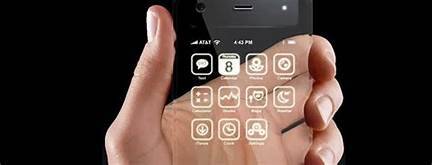Don't wanna be here? Send us removal request.
Photo



According to this article, these 10 Star Wars gadgets might be possible one day.
1. Lightsabers
2. laser guns
3. Encasing in carbonite
4. Human/Robot hybrids
5. Space travel
6. Droids
7. Floating cities
8. Clone armies
9. Landspeeders
10. The Force
https://www.cravingtech.com/10-star-wars-technologies-that-might-one-day-be-possible.html
2 notes
·
View notes
Photo



if you could travel through time, where would you go? Past or future? Imagine traveling back in time and witnessing your own birth. Or, imagine traveling back in time and having a talk with yourself to prevent mistakes that sidetracked you for years. Wouldn’t that be wonderful? A new and improved you.
But perhaps the greatest thing would be to travel back in time and witness major events like the fighting of the American Revolution or the sinking of the Titanic. Only one thing could top seeing major historical events. And that would be to actually meet historical figures. Imagine meeting Washington, Lincoln, Mozart, Jesus.
Perhaps one day this impossible fantasy will be a reality.
http://www.dailymail.co.uk/sciencetech/article-2665781/Could-time-travel-soon-reality-Physicists-simulate-quantum-light-particles-travelling-past-time.html
0 notes
Photo



Post #10
It’s getting colder. People in the northeastern and midwestern United States are used to cool weather in early spring, but they are not used to it being this cool. These regions have had cold that is unseasonably cold, although wordsmiths might want to rethink using the word unseasonably from now on as it seems weather changes are becoming the norm. Why is it so cold these days? Most scientists say Global Warming is the reason. That’s right. It’s getting warmer which is making it colder. How is that possible?
There are some unusual reasons why it’s getting cooler. Very simply, it’s getting cooler because the “melting water from glaciers is slightly colder than the seawater into which it flows. That means the ocean around the continent is more likely to freeze. The jet stream buckles and releases Arctic air from its circulation over the North Pole” (Sharwood). The global air currents circulate through the upper United States, causing lower temperatures in these regions, upsetting the balance of nature, which could lead to an ecological disaster.
http://www.news.com.au/technology/environment/climate-change/as-the-climate-warms-it-could-actually-be-generating-more-cold-outbreaks-in-the-usa-heres-how/news-story/9f90aff7d96e0a5b6870fee828e14d78
0 notes
Photo


Course Post #9
Nothing is more important than the emotions of kindness and compassion. Having genuine empathy for the suffering of others shows the level of a person’s evolution, how evolved a person is. Knowing this, one wonders about emotions in regard to technology.
In the article “The Future of Empathy-Building Tech”, the author speculates that people might be able to broadcast their emotions to others in the future. With tech devices, perhaps a wristband, people will “switch their privacy setting to public and the device will transmit what they’re feeling to others on the FeelThat network, which will allow them to receive, and feel, the feelings of others who are also wearing the wristband” (EST).
Imagine the uses for it. Perhaps a college student wants to share with his or her family or friends what it’s like to graduate college, the excitement, the hope the college graduate feels. So, the person switches to public so his or her family wearing the technology can experience the emotion. Another use might be in the criminal justice system. Imagine a person convicted of a crime being forced to feel his actions on his victims, be forced to literally feel the suffering he inflicted upon them. It could also help with people understanding other races and cultures by being able to feel what they are feeling.
How would it work? A basic explanation is that it would involve nerves and electrical impulses in a person’s brain, but the science isn’t there yet for a more detailed description.
This type of technology is already sort of in use. “Technohelpers Siri and Amazon’s Alexa have the ability to detect mental states through voice patterns. This type of technology could progress into detectable emotions” (EST).
Being able to feel what other people are experiencing would cause the human race to understand kindness and compassion like never before in the history of the human race.
https://theestablishment.co/the-future-of-empathy-building-tech-df6426ccd2cb
9 notes
·
View notes
Photo



Course Post #8
Have you ever wondered what people are going to look like in 1,000 years? What about 10,000 years? What about 100,000 years? A 2013 article by Parmy Olson wonders the same thing. In her article, entitled “What human faces might look like in 100,000 years”, she refers to designer and researcher Nikolay Lamm, who speculates about the possibilities.
Lamm predicts what human faces could look like, how they could evolve, spanning 20,000, 60,000, and 100,000 years. These predictions are based on humans almost certainly venturing into space and taking up residence there. He says that humans will have a much different environment to live in because of the change in gravity and light availability, and humans will likely have mastered biology by then through advanced genetic engineering.
This mastering will include the ability to enlarge eyes to compensate for the lack of sunlight that humans have in abundance on Earth. It is dark in space and artificial light will not be as illuminating as the sun’s light, which also provides elements that humans need to maintain health. “Our eyes will grow to Japanese anime-style proportions in the meantime, as human beings are forced to live in other colonies of the solar system and in dimmer environments farther away from the sun” (Olson). Our heads will also grow to match our larger eyes. Gray alien size?
How will this affect our reading? Will we even be reading by that point, or will we just download information into our brains from computers. Our brains will surely be far superior than they are now, perhaps far beyond what we could ever believe.
Will there even be books by then? In the article “Starbooks and the Death of the Work” from book two.org, the author says the author isn’t important which could lead to the death of books. Perhaps the Internet will evolve in ways we could never imagine and that will make books obsolete. The author also says “the future never arrives.” But perhaps the future will arrive if humans will have reached a point where we can alter DNA to allow us to venture into the farthest reaches of space looking like gray aliens.
https://www.theguardian.com/science/2013/sep/18/human-faces-in-the-future
1 note
·
View note
Photo



Class post #7
A 2017 article by Zak Cheney-Rice offers an interesting look into the future of the United States. The most startling change could be the racial makeup of American society. Imagine an America where everyone is virtually the same color.
According to the article, 2043 could be the year when white people become the minority, when the white population will “dip below 50%” (Rice). This is when Asians, blacks, Hispanics and other minorities become the dominate race. This would certainly change the political make up of Congress, and even change who is elected president, as well as radically change what viewers watch on TV and in the movies. The changing demographics has already begun as fewer white people are having babies and more Hispanics are having babies, changing everything from music to TV programs and what food is marketed to the growing Hispanic consumer, as well as forcing Republicans in Congress to Gerrymander districts to compensate for the change in voters.
Perhaps the biggest change will be what people look like. National Geographic had a special 125th-anniversary issue that showed what is to come, that in the near future people will be basically one color, light brown, because of the mixing of the races.
The effect on society could be profound. Image a society without racism. Imagine a society that is more harmonious because of it. Racial strife is a thing of the past. Racism is only in history books. The country will have healed a gaping wound that has pained America for hundreds of years. It would not happen overnight, so it would be a gradual healing, but at some point people will realize that a new world has dawned and the dark of the past is gone.
This would also change many other aspects of American life that most could not even dream about now, but it would surely be a much better place in which to live.
https://mic.com/articles/87819/what-will-america-look-like-in-2060-9-bold-predictions-about-our-future#.jQo7qktjU
2 notes
·
View notes
Photo

Course post #6
What if it were possible to upload a person’s consciousness into a computer, which, as far-fetched as it sounds now, is actually being studied? In doing this, would most people do it? It would certainly transform the world as we know it. In doing so, would it cause social equality among the world’s nations? It would certainly change how science fiction is created. It would certainly mean an end to political disputes. What would it mean for political ideology like Marxism and democracy? Would it make them obsolete, or would they transform into something else?
1 note
·
View note
Photo

Course Post #5
Steven Shaviro’s “No Speed Limit”. In order to move beyond capitalism, we need to beyond technology, to evolve beyond it. Shaviro argues that accelerationism is the marriage between Marxism and science fiction. Between what is hoped for and what is imagined.
0 notes
Photo

Course Post #4
In Bruce Sterling’s “The Epic Struggle of the Internet of Things”, he discusses the advancement of technology, but not just ordinary advancements, like a refrigerator “talking” with a toaster, which he describes as “the legacy of internet of yesterday.” Rather, he refers to “the genuine Internet of Things wants to invade that refrigerator, measure it, instrument it, monitor any interactions with it.”
In other words, Sterling refers to true advancements. Imagine communication devices implanted into a person’s brain that allows a person to exchange thoughts like one would talk on a cell phone, or exchange data with people. Perhaps that is too advanced. To ratchet it down a little, one could imagine technology where driverless cars follow a track and the driver could read the newspaper or surf the web with the car’s computer screen.
0 notes
Text

Course Post #3
As the article “Welcome to the Future Nauseous” by Venkatesh Rao says, if you look back on your life, you will see that it has been “radically transformed.” Cell phones are a big part of that, but so is social media, which is an equally big part of the transformation. I can’t go more than an hour without wondering what friends and family are doing on any one of my many social media accounts. It is engrained in who we are as a society now. Most of us are addicted to it.
The century we have just begun is the information century, a “manufactured normalcy,” where we can communicate with people in every country in the world we’ve never met with social media, send pictures around the world in seconds, talk on phones we put in our pockets, and jump on a plane and travel across the globe in a matter of hours, which is a form of information when you consider what we are able to do with this rapid travelling, but this future we are continually moving towards “never seems to take us to a foreign place.”
The New Normalcy 4399
2 notes
·
View notes
Photo
The Future is Now

The Future is Now
Advanced technology is already being used to assemble cars and other things. News reports state that tech firms are developing advanced robotics, and that android technology is only a few years away from becoming a reality, placing robotic servants in everyone’s home, and even producing robotic soldiers to replace human soldiers on the battlefield.
1 note
·
View note
Photo
The Sky is the Limit

The Sky is the Limit
In regard to smartphone technology, the future is now. Just think how far the world has come in smartphone technology. Imagine what the next 20 years is going to bring.
1 note
·
View note

